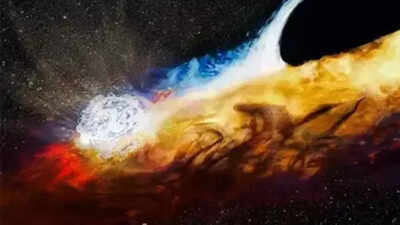ARTICLE AD BOX

BENGALURU: A team of Indian astronomers has uncovered fresh evidence of how tiny dust grains drifting in space behave under the influence of magnetic fields. The discovery, they say, could help scientists better trace how stars and galaxies are formed.The study was led by researchers from the Indian Institute of Astrophysics (IIA), Bengaluru, along with collaborators abroad. The findings have been published in “The Astrophysical Journal”.They used the James Clerk Maxwell Telescope in Hawaii to study a massive star-forming cloud called “G34.43+0.24”, nearly 12,000 light-years away in the Milky Way.
Within this cloud, new stars are still forming inside dense envelopes of dust and gas.
By mapping how the dust aligned with magnetic fields, the team was able to confirm long-debated theories about the ways these grains respond to their surroundings.Scientists found that dust behaves differently depending on conditions. In some cases, grains align neatly with magnetic fields. In others, they spin so fast under strong starlight that they break apart into smaller fragments, weakening the alignment.
Sometimes, magnetic forces even enhance this process, making the dust grains more efficient at tracing magnetic fields.“These mechanisms show how dust grains can act as natural compasses in space. This work strengthens the observational support for the well-established popular grain alignment theories,” Saikhom Pravash, lead author and PhD researcher at IIA and Pondicherry University, said. His colleague Archana Soam added that understanding dust alignment is crucial.
“It’s the key to tracing interstellar magnetic fields and exploring their influence on star formation,” Soam said.Cosmic dust, although only a few micrometres in size, plays an outsize role in the universe. It absorbs and scatters light, influences the birth of stars, and even carries the building blocks of planets. Astronomers first noticed its effects in 1949, when light from certain stars was found to be polarised—vibrating in a specific direction because of dust alignment.The department of science and technology (DST), under which IIA is an autonomous institute, said: “The new work provides the strongest observational evidence so far for how these alignment processes unfold. By establishing this link, astronomers now have stronger tools to chart magnetic fields across the galaxy, a step that could reshape our understanding of how the cosmos organises itself.”



.png)
.png)
.png)
















 1 day ago
3
1 day ago
3







 English (US) ·
English (US) ·